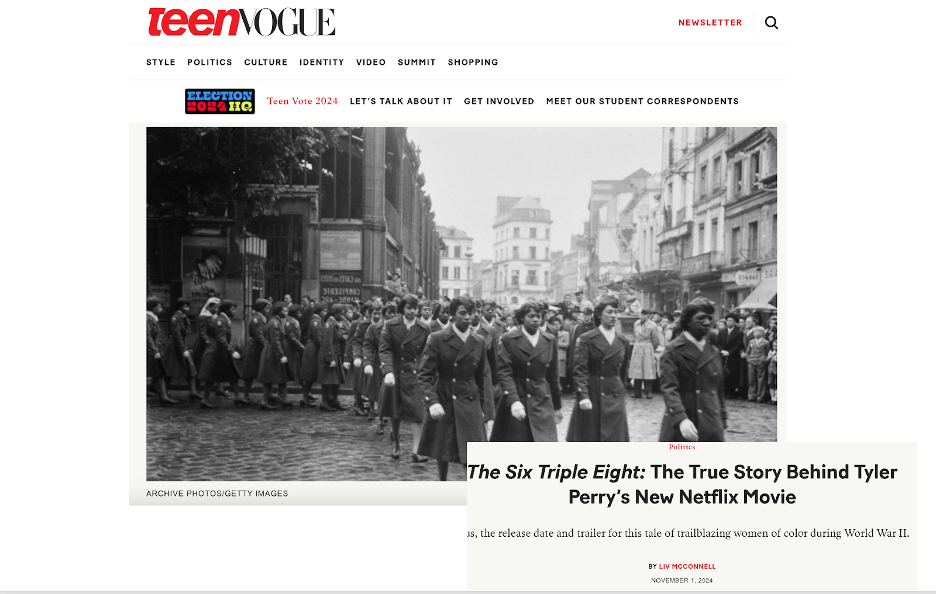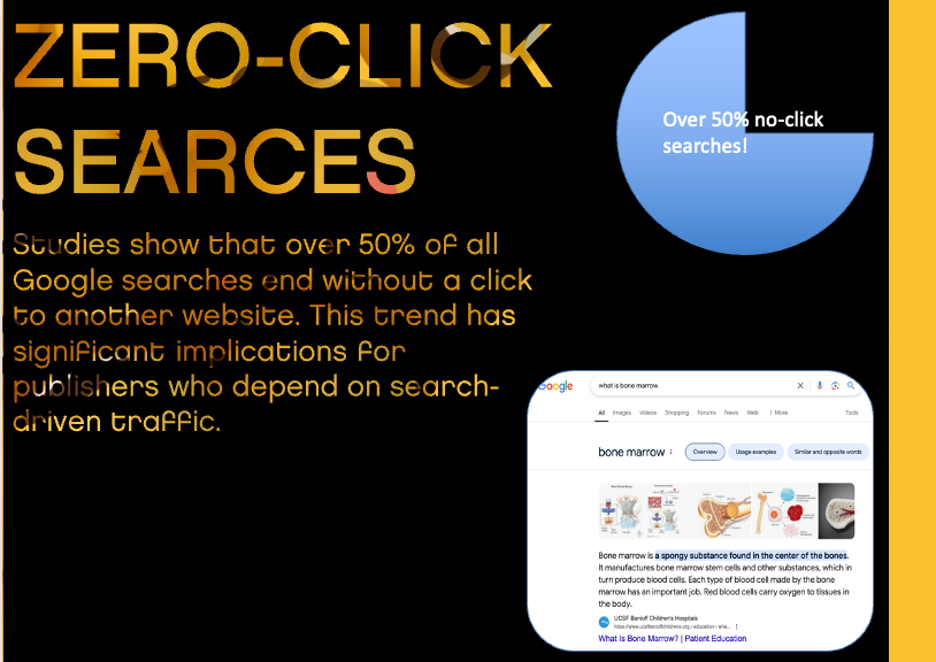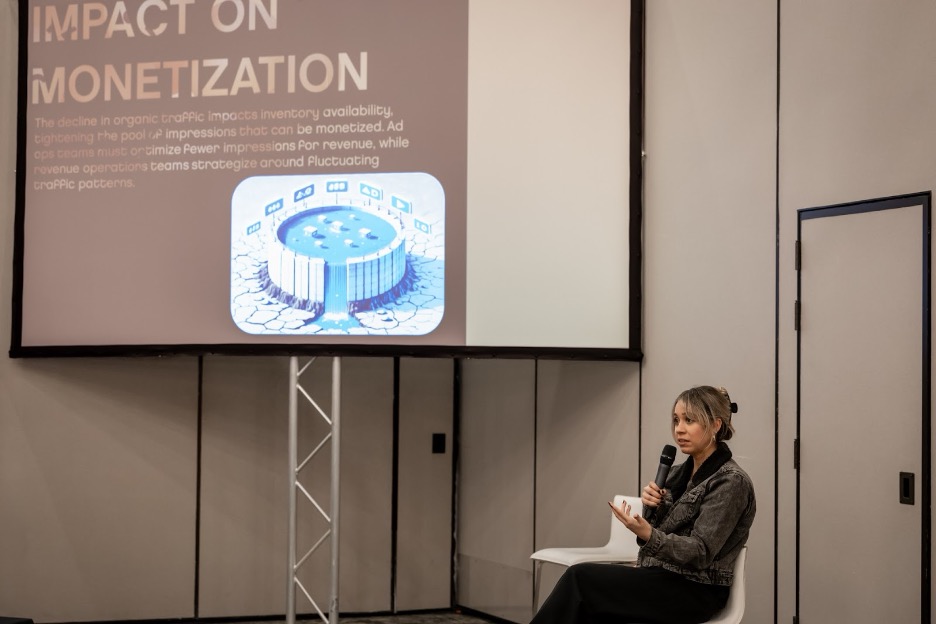
With algorithm changes and the surge of zero-click searches, traditional pathways to driving traffic are being upended. Mandy Velez Tatti, Associate Director of Audience Development at Teen Vogue, shares how to adapt, innovate, and sustain growth when search alone no longer delivers
Imagine a world where traditional search traffic is no longer your main tool. As search engine algorithms evolve and user behaviors shift, it’s not a distant possibility, it’s precisely the reality we face.
The new focus for users is concise immediate answers over exploratory browsing (which can be time-consuming). Welcome to the era of search decline, where adaptation is no longer optional but a key to survival.
For years, search engines have been a primary driver of web traffic for publishers. But times are changing. Platforms like Google now prioritize zero-click searches—serving users answers directly on the search results page without the need to visit a website. Add in AI-driven snippets and frequent algorithm updates, and publishers are left grappling with declining visibility and unpredictable traffic.
Mandy Velez Tatti, who oversees audience development at Teen Vogue and other Condé Nast brands, shared staggering statistics: Teen Vogue’s referral traffic from Facebook dropped by 97% over the past 18 months, and algorithm changes caused a 15% decline in search traffic earlier this year. “It’s a wake-up call for publishers,” Mandy said, “to rethink how we engage and retain audiences.”
This new era of search isn’t temporary, but indicative of a fundamental shift in how audiences access information. During a breakout session at AdMonsters Publisher Forum Scottsdale, Mandy laid out the essential dos and don’ts for survival. When traditional search routes dry up, diversifying channels become lifelines for maintaining visibility and engagement. Here’s how publishers can pivot:
Do: Lean Into Diversification
Go Beyond Social Media
Social media platforms like Facebook and Instagram have deprioritized publisher content, making diversification essential. Mandy recommends exploring underutilized platforms like Reddit and Snapchat.
While Reddit offers opportunities to drive traffic through community engagement, Snapchat has unexpectedly become a referral powerhouse for Teen Vogue. “We don’t even strategize heavily for Snapchat,” Mandy admited, “but when users follow us, they get free push notifications to our content—essentially a no-cost traffic driver.”
This unexpected success highlights the importance of experimenting with platforms that may not traditionally be on your radar.
Niche Content Wins
When competition for search traffic is fierce, focusing on niche content can yield outsized rewards. For instance, Mandy’s team discovered that historical explainers tied to Netflix releases perform exceptionally well.
“We leaned into this trend with a piece about an upcoming movie, and it became our top-performing story for weeks,” she noted. Publishers can find new pockets of traffic by identifying specific content types that resonate with audiences and search algorithms.
Engaging storytelling and personalized content curation can cut through the noise, garnering attention and building a dedicated following from social platforms whose content structure differs vastly from search engines.
Leverage Partnerships
Forming partnerships with influencers, advocacy groups, and even other media brands can amplify reach. Mandy recounted a story that performed exceptionally well on Facebook, not because Teen Vogue posted it, but thanks to an engaged advocacy group sharing it. “This is a reminder that partnerships can be just as important as our direct strategy,” she said.
Identifying potential partners and creating collaborative content not only breathes fresh life into tired marketing campaigns but also introduces your content to new, possibly untapped audiences.
Don’t: Rely Solely on Algorithms
Avoid Overdependence on One Channel
One of the most striking lessons from Mandy’s experience is the danger of overreliance. Teen Vogue’s steep Facebook decline underscores the volatility of platforms. “We lost loyalty and traffic overnight,” Mandy recalls. Publishers must avoid putting all their eggs in one basket and prioritize multiple, independent traffic sources.
Don’t Ignore AI’s Impact
AI snippets are reshaping search behavior. “Users can now get the answers they need directly on the results page, without ever clicking,” Mandy explained. Publishers should adapt by creating content that AI struggles to replicate—such as in-depth analysis, expert interviews, and multimedia elements.
A staggering 50% of all Google searches today end without a click to a website. This stark reality implies that audiences are increasingly satisfied with the information they discover directly in search results, bypassing traditional web pages entirely.
Skip Short-Term Fixes
While chasing trends like TikTok Shop or YouTube Shorts may seem appealing, Mandy cautions against short-sighted strategies. “Not everything is a revenue driver overnight. Test cautiously, but always keep a long-term vision in mind.”
Do: Build Direct Connections
Invest in Email and Direct Traffic
Direct traffic is a growing focus at Teen Vogue. Mandy highlights email as a key tool: “Email drives a loyal audience straight to our site without relying on algorithms.” Additionally, evergreen content like “101 Ways to Ask Out a Girl” sustains year-round traffic while converting search visitors into repeat readers. Mandy emphasizes that nurturing direct relationships with audiences is one of the most sustainable strategies.
Experiment With Visual and Multimedia Content
Embedding photos and videos in articles not only boost time spent on page—a crucial KPI—but also appeals to search algorithms. “Google rewards sites that prioritize visual elements,” Mandy says. Incorporating videos, GIFs, and infographics can make a significant difference in both search rankings and engagement.
Video content is increasingly dominating the social space, and channels like TikTok allow even small creators to reach massive audiences. To accommodate changing viewing habits, publishers should diversify their media formats, emphasizing video. Video can significantly increase time-on-platform and engagement rates, especially when content is squarely targeted at what audiences click on today.
Don’t: Overlook New Revenue Opportunities
Move Beyond Banner Ads
Traditional ad placements aren’t enough in an era of declining traffic. Mandy’s team has found success with event sponsorships and commerce content while exploring TikTok Shop as a revenue stream. “It’s not about replacing one model but layering different strategies to stay ahead,” she explains.
One of the most potent tactics is engaging cross-platform strategies that synergize content promotion across different channels. Integrating blogging with social media pushes, livestreams, and direct audience engagement can restore traffic levels lost to declining searches. This multifaceted approach fosters diverse pathways for content discovery and consumption.
Don’t Neglect Collaboration
Cross-functional alignment between editorial and revenue teams is vital. Mandy shared how her team works closely with ad ops to format videos for optimal revenue performance. “Communication is key. When editors understand revenue mechanics, we can better align content strategy to support those goals.”
Do: Stay Nimble
Adapt to Seasonal Trends
With traditional tentpoles like the Met Gala and back-to-school campaigns delivering less predictable traffic, Mandy emphasizes agility. “We operate on a ‘one week at a time’ mindset, leaning hard into what’s working now,” she says. Data-driven pivots ensure that her team capitalizes on emerging opportunities while staying resilient in the face of change.
By diligently tracking content performance across social platforms, publishers can make informed decisions to refine and adapt their strategies, ensuring every piece of content works towards maximizing reach and engagement.
Test, Learn, Repeat
Mandy’s approach is all about trying new tactics, from leveraging Snapchat notifications to experimenting with influencer collaborations. “Everything else is experimentation,” she advises. “Throw things at the wall and see what sticks—but track your results closely.”
Focus on What You Can Control
Mandy leaves one crucial piece of advice for publishers navigating the challenges of search decline: “Prioritize your audience. Whether it’s through direct traffic, niche content, or partnerships, stay true to what makes your brand unique.”
Diversified content distribution strategies provide a proactive path for content creators aiming to reclaim lost ground. While these trends signify increased challenges, they also herald exciting opportunities for those willing to innovate and adapt.



